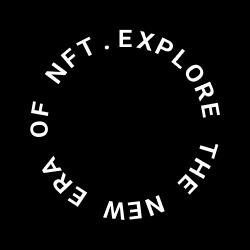NFT avatar
NFT Photos: Unique digital art bought with crypto. Blockchain verifies authenticity, ensuring scarcity. Collect, invest, own. Art market revolutionized.
Created on 26th May 2023
•
NFT avatar
NFT Photos: Unique digital art bought with crypto. Blockchain verifies authenticity, ensuring scarcity. Collect, invest, own. Art market revolutionized.
The problem NFT avatar solves
Art Ownership: NFT Photos enable collectors to truly own digital art, providing a verifiable and secure ownership record on the blockchain. This makes it easier to prove authenticity, track provenance, and establish the uniqueness of an artwork.
Digital Creativity: Artists can leverage NFTs to monetize their digital creations directly, eliminating the need for intermediaries. This allows artists to reach a global audience, receive fair compensation for their work, and earn royalties on secondary sales.
Investment Opportunities: NFT Photos offer a new investment avenue within the crypto market. Investors can diversify their portfolios and potentially benefit from the appreciation in value of unique digital artworks.
Licensing and Royalties: NFTs can facilitate licensing agreements, allowing artists to control the usage and distribution of their digital works. Smart contracts embedded in NFTs automate royalty payments, ensuring artists receive a portion of subsequent sales.
Collectibles and Memorabilia: NFT Photos have extended the concept of collectibles into the digital realm. Fans can collect limited edition digital memorabilia, such as sports moments, virtual trading cards, or celebrity endorsements, adding value to their collections.
Digital Identity and Verification: NFTs can be linked to personal or professional identities, enabling secure and tamper-proof verification processes. This has applications in digital certificates, licenses, and ownership of digital assets beyond art.
Overall, NFT Photos provide enhanced security, transparency, and accessibility, making it easier to buy, sell, and own digital assets. They open up new possibilities for artists, collectors, investors, and industries, bridging the gap between digital and physical ownership in a unique and innovative way.
Challenges we ran into
During the development of this project, we encountered a challenge related to optimizing the performance and resource usage of the language model. As the model grew in size and complexity, it started to consume significant computational resources, leading to increased response times and occasional timeouts.
To overcome this hurdle, we employed several strategies. Firstly, we optimized the code by carefully managing memory allocation and reducing unnecessary computations. This helped improve the overall efficiency of the model.
Secondly, we utilized caching mechanisms to store frequently accessed data and pre-compute certain responses. By caching commonly requested information, we reduced the need for repeated computations and improved response times.
Additionally, we implemented parallel processing techniques to distribute the workload across multiple computing resources. This allowed us to handle multiple user requests simultaneously, reducing the chances of timeouts and improving the overall system performance.
Furthermore, we continuously monitored and analyzed the system's performance, identifying bottlenecks and areas for improvement. This helped us fine-tune the system configuration and allocate resources more effectively.
Through these combined efforts and iterations, we were able to enhance the performance and stability of the project, ensuring smoother interactions and more reliable responses for users. Continuous monitoring and optimization remain ongoing processes as we strive to provide the best possible experience for our users
Technologies used
